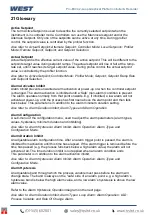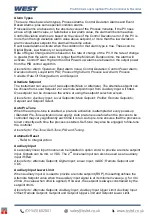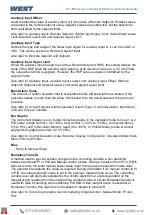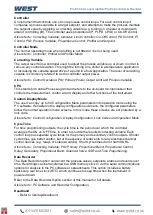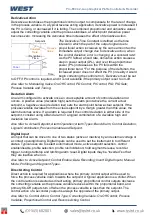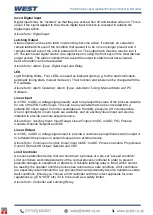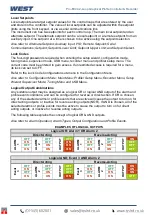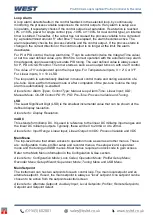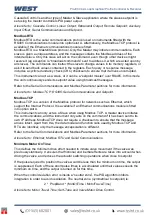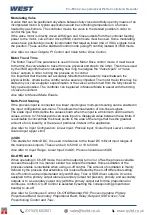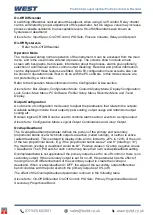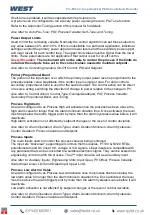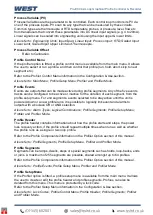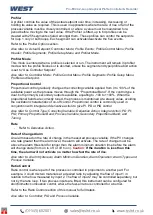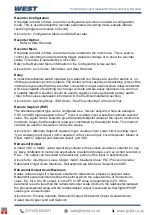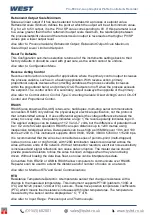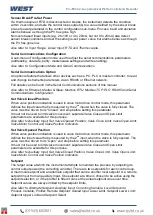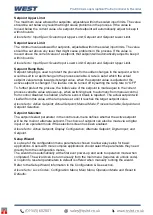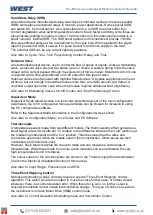
Pro-EC44 2-Loop Graphical Profile Controller & Recorder
Pro-EC44 Product Manual - 59540-2 September 2014
Page 217
Loop Alarm
A loop alarm detects faults in the control feedback in the selected loop, by continuously
monitoring the process variable response to the control outputs. If any alarm is setup as a
loop alarm, it repeatedly checks if the control output is at saturation. If saturation is reached
(0% or 100% power for single control type, -100% or +100% for dual control type), an internal
timer is started. Thereafter, if the output has not caused the process variable to be corrected
by a predetermined amount 'V' after time 'T' has elapsed, the alarm becomes active. The
alarm repeatedly checks the process variable and the control output. If the process starts to
change in the correct direction or the control output is no longer at the limit, the alarm
deactivates.
For PI or PID control, the loop alarm time 'T' can be automatic (twice the Integral Time value)
or set to a user defined value up to 99m 59s. Correct operation with the automatic loop alarm
time depends upon reasonably accurate PID tuning. The user defined value is always used
for P, PD or On-Off control. The timer starts as soon as an output turns on with on-off control.
The value of 'V' is dependent upon the input type. For Temperature inputs, V = 2°C or 3°F.
For Linear inputs, V = 10 x LSD
The loop alarm is automatically disabled in manual control mode and during execution of a
pre-tune. Upon exit from manual mode or after completion of the pre-tune routine, the loop
alarm is automatically re-enabled.
Also refer to: Alarm Types; Control Type; Manual Loop Alarm Time; Linear Input; LSD;
Manual Mode; On-Off Control; PD; PI; PID; Pre-Tune; Process Variable and Tuning.
LSD
The Least Significant Digit (LSD) is the smallest incremental value that can be shown at the
defined display resolution.
Also refer to: Display Resolution.
mADC
This stands for milliamp DC. It is used in reference to the linear DC milliamp input ranges and
the linear DC milliamp outputs. Typically, these will be 0 to 20mA or 4 to 20mA.
Also refer to: Input Range; Linear Input; Linear Output; mVDC; Process Variable and VDC
Main Menu
The top-level menu that allows access to operation mode as well as all other menus. These
are: configuration mode, profiler setup and recorder menus, the setup wizard, supervisor
mode and the tuning and USB menus. Most menus require an unlock code to gain access.
Refer to the Main Menu information in the Configuration & Use section.
Also refer to: Configuration Mode; Lock Codes; Operation Mode; Profiler Setup Menu;
Recorder Menu; Setup Wizard; Supervisor Mode; Tuning Menu and USB Menu.
Main Setpoint
The instrument can has two setpoints for each control loop. The main local setpoint and an
alternate setpoint. If used, the main setpoint is always a
“local” setpoint. One setpoint can be
chosen to be active from the setpoint selection screen.
Also refer to: Alternate Setpoint; Auxiliary Input; Local Setpoints; Profiler; Remote Setpoints;
Setpoint and Setpoint Select.
Содержание Pro-EC44
Страница 1: ...Pro EC44 2 Loop Graphical Profile Controller Recorder Pro EC44 User Guide 59540 2 ...
Страница 2: ......
Страница 6: ......


